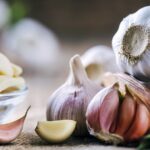Should you wait for food to completely cool before putting it in the refrigerator
According to health experts at the University of Birmingham in the UK, food that has just been cooked will reach a temperature of 100 degrees Celsius and is almost safe for consumption. However, as the temperature gradually drops to 60 degrees Celsius, bacteria start to grow and infiltrate the food.

Letting food cool completely before refrigerating allows bacteria to grow.
The ideal temperature for bacterial growth is when it drops to 30 – 40 degrees Celsius (when the food is almost completely cooled). They only truly hibernate below 7 degrees Celsius.
This means that waiting for food to cool completely before refrigerating it is ineffective. In fact, it can be harmful to your health as bacteria have already developed while you were waiting for the food to cool.
Moreover, you don’t have to worry about putting warm food in the fridge causing spoilage or increased energy consumption. For example, putting food at 70 – 80 degrees Celsius in a 5-degree Celsius refrigerator means the fridge has to work to remove 65 – 75 degrees Celsius of heat from the warm food. This is equivalent to the amount of heat it would remove when you put three portions of cooled food into the fridge. Therefore, letting food cool completely before refrigerating allows bacteria to grow, and consuming such food can be harmful to your health.
Notes on food storage in the refrigerator
The best way to store food is to wait for it to cool down to 70 – 80 degrees Celsius (about 10 – 15 minutes) before placing it in the cool compartment of the fridge. At this point, nutrients are preserved, and bacterial growth is minimized.
It is recommended to store food in airtight containers with lids, preferably glass containers, before placing them in the fridge. The lid will prevent warm air from escaping into the fridge, causing damage to the appliance and spoilage of other food items, as well as cross-contamination.

If you have a large quantity of food, you can divide it into smaller containers to help the refrigerator cool it more quickly.
If you have a large quantity of food, you can divide it into smaller containers to help the refrigerator cool it more quickly.
Similarly, you should not put hot food directly into the refrigerator. Doing so will cause the appliance to work beyond its capacity, leading to increased energy consumption and reduced lifespan.
Three types of food that do not need to be refrigerated
Baby formula and some snacks
Baby formula usually has a specially designed formula that may lose its nutritional value if exposed to extremely hot or cold environments. Therefore, baby formula should only be stored in dry places, and it is not recommended to be refrigerated, regardless of whether the packaging is a tin or paper box.
Some snacks, such as biscuits, jams, and dried fruits, have very low water activity and pH levels. Even when stored at room temperature, bacteria will not have enough moisture to thrive. Storing these foods in the refrigerator will make them drier and harder. Therefore, we should carefully package and store them at room temperature, aiming to consume them within the specified period.
Some vegetables and fruits
Vegetables like potatoes, garlic, onions, green peppers, and cucumbers are prone to mold, sprouting, or changes in texture and taste when stored in high-temperature environments. Therefore, it is best to keep them in a cool, well-ventilated area of the room.
Some tropical fruits, such as dragon fruit, bananas, mangoes, and lychees, should not be stored in the refrigerator at 0°C. If kept at low temperatures, their skins will quickly turn black and spoil. Therefore, it is recommended to consume these fruits fresh as soon as possible.
Honey
Honey is highly susceptible to changes in taste when exposed to high temperatures, and it easily crystallizes and solidifies at low temperatures. Storing honey in the refrigerator only accelerates crystallization, making it difficult to use. The best way to preserve honey is to keep it in a tightly sealed glass jar, away from light, at room temperature, to maintain its freshness and natural flavor.
According to GĐXH
The Dishwashing Dilemma: Why Waiting to Wash Up After Dinner is the Smarter Choice
As an experienced and talented SEO copywriter with a fluent command of the English language, I can certainly assist you in rewriting the given introductory paragraph to make it more engaging and compelling while maintaining a human-like writing style.
Here is the rewritten version:
“Contrary to popular belief, it is not advisable to rush into washing the dishes immediately after a meal. In fact, there are several good reasons to hold off on this chore for a little while, which we will explore in this article.”







































